5 Best National Parks to See the Northern Lights
Few natural phenomena are as magical and captivating as the Aurora Borealis, commonly known as the Northern Lights. This is Mother Nature’s greatest show, a dazzling display of dancing lights in the sky.
While you increase your chances of actually seeing the Northern Lights the further north you go, they’re occasionally also visible at more southerly latitudes.
People typically associate the Northern Lights with (sub)Arctic places like Canada, Norway, Iceland, and Alaska, but in the United States, you can sometimes also see them in the northern states of the Lower 48.
Since it’s always the darkest places that provide the best Aurora Borealis viewing opportunities, a number of northern national parks provide excellent conditions to see the Northern Lights.
So, in case you’re wondering where to see Northern Lights in USA national parks, I’ve listed the top 5 below.
Top 5 National Parks to See the Northern Lights in America
This blog post about the best national parks to see the northern lights contains affiliate links. You can read more about our Terms of Use / Disclosure here.
All these national parks for Northern Lights viewing are way up north in the U.S. Except for Denali, which is in Alaska, they all border Canada.
Although the Aurora Borealis is present all year round, the optimal period to see them is in fall and winter. This is for the simple reason that those two seasons have the longest and darkest nights, particularly when you go north.
In fact, both the fall and spring equinoxes are great for Aurora viewing. Space Weather literally says that “Auroras love equinoxes.” The entire six-month period between both equinoxes is primetime when it comes to seeing the Northern Lights.
However, mid- to late-fall is considered to be the best time to see the Northern Lights in national parks.
This is because the weather’s still relatively comfortable, yet the nights are approaching their longest length. And of course, there may still be some beautiful fall foliage lingering in the valleys!
5. North Cascades National Park, Washington
Can you see the Northern Lights in Washington? In short: yes. If you’re lucky.
Despite its location near Seattle, North Cascades National Park in northern Washington is one of America’s least-visited national parks.
It’s also one of the wildest and most pristine parks in the Lower 48, home to endless series of mountain peaks, countless waterfalls (of course!), old-growth forests and shimmering lakes.
Although seeing the Northern Lights in North Cascades National Park is a rare occurrence, it’s happened several times before. And because this park is so breathtakingly beautiful, it’s worth going there if you’re living in or visiting the Pacific Northwest and there’s a solar flare headed toward Earth.
Just keep an eye on the Northern Lights forecast before and during your trip.
Ideal Northern Lights Viewing Period in North Cascades National Park: November to March
More About North Cascades National Park
- Park Website
- Travel Guide
- Topographic Map
- Top Things To Do in North Cascades National Park
- Accommodation
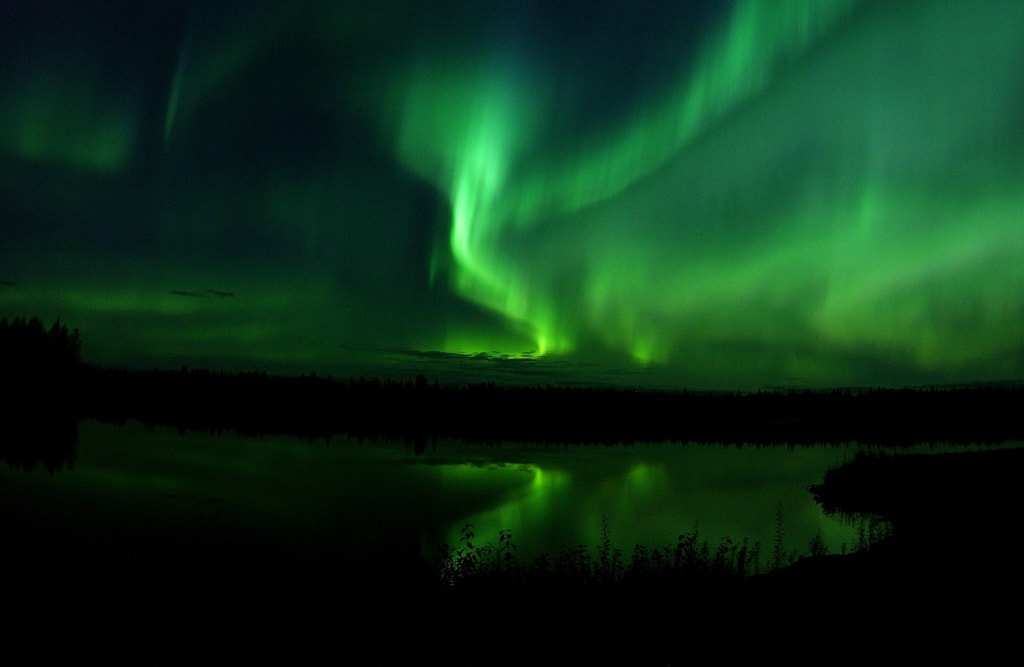
4. Isle Royale National Park, Michigan
Situated in the northwestern part of Lake Superior, only a few miles from the Canadian border, Isle Royale National Park is one of the remotest and least accessible national parks in the contiguous U.S.
In fact, it’s so remote and rugged that the National Park Service actually closes the park in winter.
Due to extreme winter weather and the simple fact that it’s nearly impossible to safely get visitors there, Isle Royale is closed from November 1 through April 15.
That doesn’t mean you won’t have any chance to see the Northern Lights here, though. The Northern Lights actually show up pretty regularly in these parts. So, you might get lucky and witness an Aurora Borealis show in October, late-April, and even May.
Also, even when the rest of the park is shut down for winter, the Houghton Visitor Center remains open throughout the entire year. You can swing by and ask about alternative places to see the Northern Lights in the area.
Best Isle Royale National Park Aurora Borealis Viewing Months: October, April and May
More About Isle Royale National Park
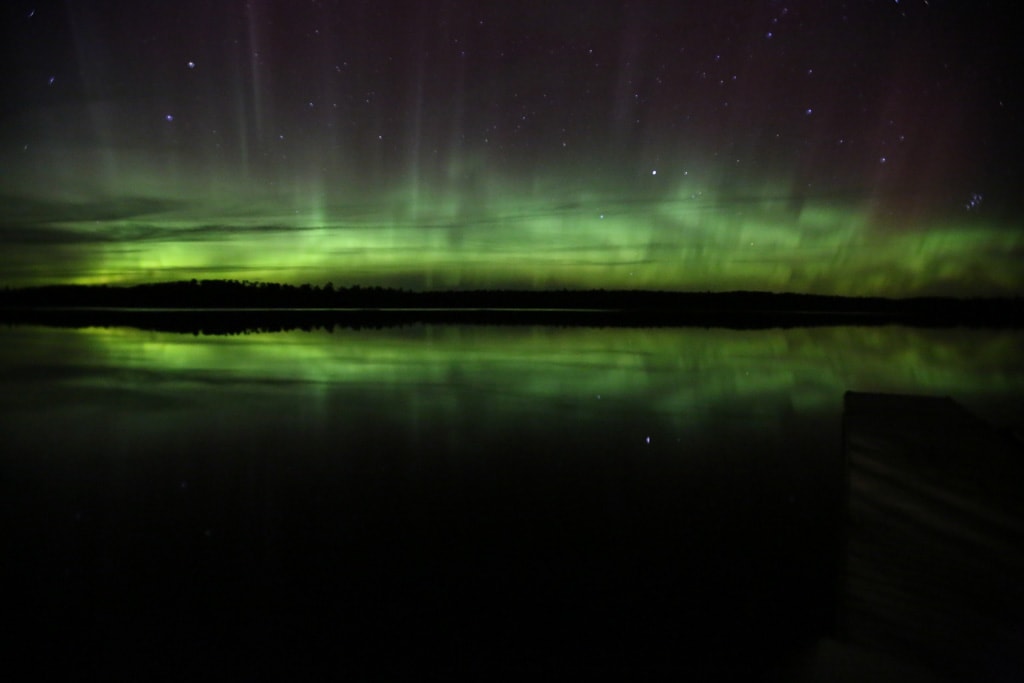
3. Voyageurs National Park, Minnesota
One of the best national parks to see the Northern Lights in the U.S. is Voyageurs National Park.
A vast area of countless lakes and islands—islands on lakes and lakes on islands—in northern Minnesota, this is a boater’s, camper’s and hiker’s paradise, home to wolves and moose. This park is also super-remote, far removed from obtrusive artificial city lights.
The night sky above Voyageurs is pristine and provides ideal Aurora Borealis watching conditions. There are few places like this, where you can stargaze and admire the Northern Lights while lying on your back in a canoe.
The best places to enjoy the Voyageurs National Park Northern Lights show are the Rainy Lake Visitor Center, the Ash River Visitor Center, the parking lot at Voyageurs Forest Overlook and Woodenfrog Beach.
Additionally, basically every lakeside campsite is perfect to view the Aurora in Voyageurs.
You can’t go wrong anywhere in this gorgeous playground of water and shoreline!
When to see Northern Lights in Voyageurs National Park: November through April
More About Voyageurs National Park
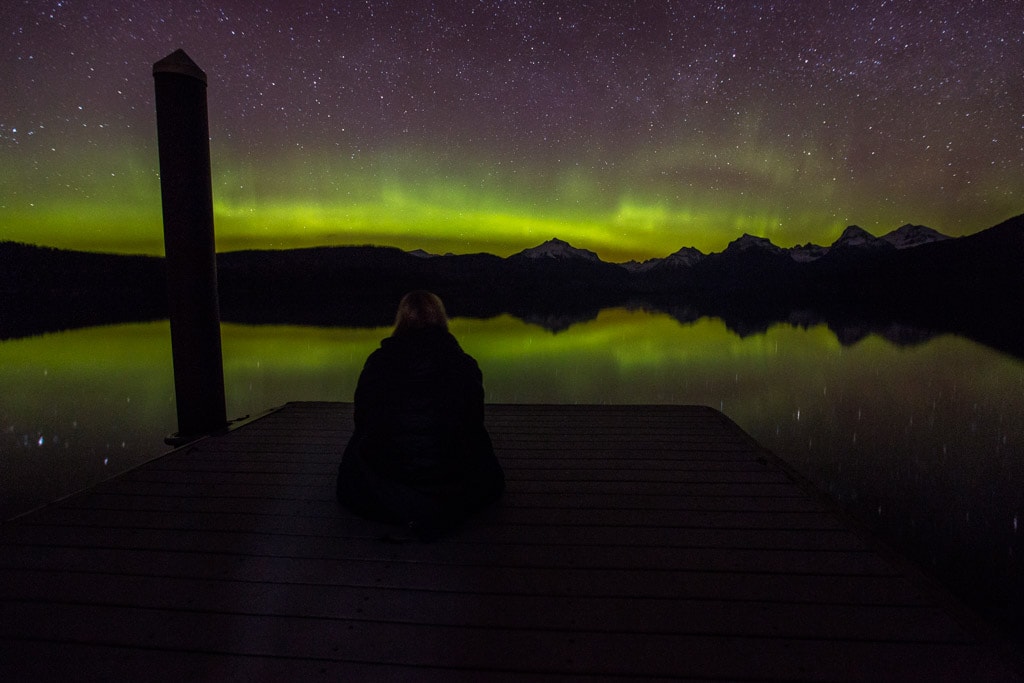
2. Glacier National Park, Montana
As an International Dark Sky Park, Glacier National Park is one of the best national parks for stargazing.
Combined with its location in northern Montana, it’s also one of the prime destinations for Northern Lights viewing in the Lower 48.
In Glacier, “half the park is after dark”. This is one of those places where the Northern Lights might show up all year round. The optimal period is late-fall and winter, though.
If you’re fortunate enough to visit Glacier National Park when there’s a chance of Northern Lights, head over to Lake McDonald or Goat Haunt. Both those places offer open views toward the north.
Optimal Glacier National Park Northern Lights Viewing Period: November through March
More About Glacier National Park
- Park Website
- Travel Guide
- Topographic Map
- Best Glacier Hikes
- Top Attractions on Going-to-the-Sun Road
- Accommodation
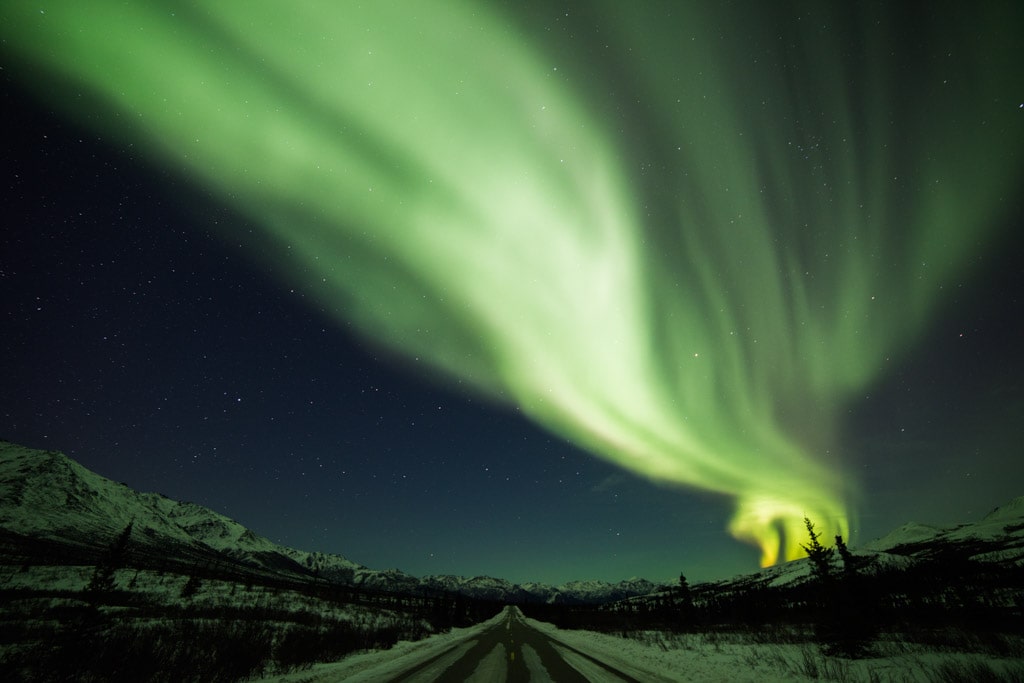
1. Denali National Park, Alaska
The undisputed best national park for Northern Lights viewing is Alaska’s Denali National Park. Home to vast expanses of wilderness and only one road, this huge national park lies a few hours north of Anchorage, the park’s gateway town.
Denali attracts people from all over the world for more than one reason. It is, for example, one of the best places for wildlife viewing in America, but also offers world-class snowshoeing and camping.
Even though it’s pretty far north, Denali National Park is open year-round.
A lack of light pollution and really long nights, combined with a subarctic location, create perfect conditions to see the Aurora Borealis.
This is a place where you can see the Northern Lights throughout most of the year, from roughly late-August to mid-April. Only in June and July, summer in Alaska, there’s virtually no chance of seeing them
The recommended time to see the Northern Lights in Denali National Park is fall, which starts as early as late August in these parts.
Fall is also a great time to see Denali’s wildlife, such as grizzly bears and wolves, before winter envelops the landscape in a thick coating of snow.
Best Denali National Park Northern Lights Viewing Period: September through March
More About Denali National Park
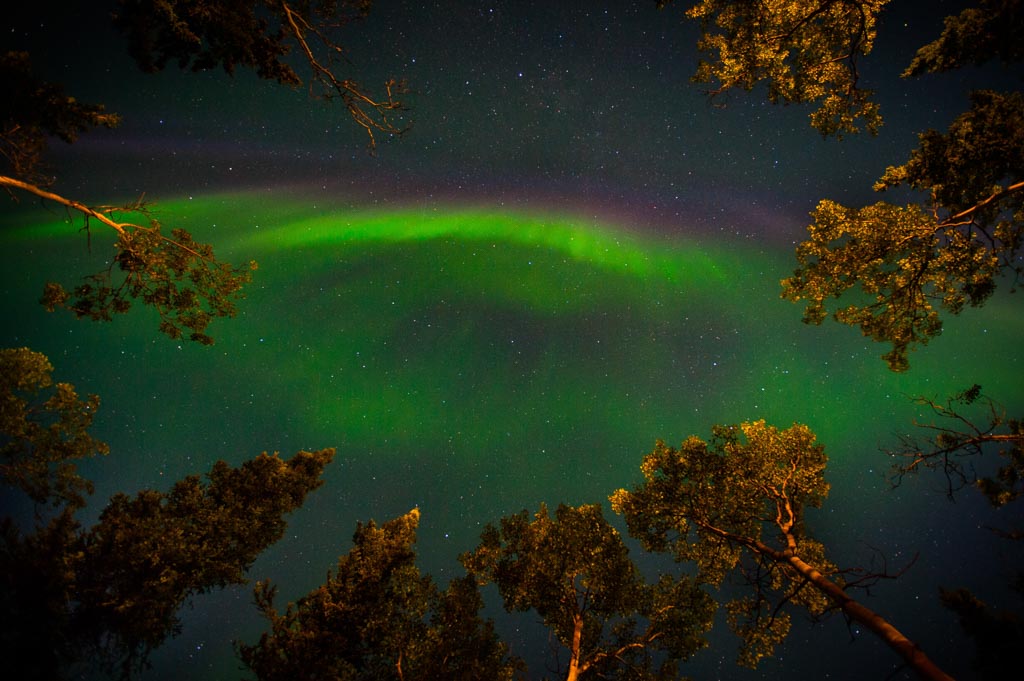
Other Great Places for Aurora Borealis Viewing in the USA
- Wrangell-St. Elias National Park, Alaska
- White Mountains National Recreation Area, Alaska
- Sleeping Bear Dunes National Lakeshore, Michigan
- Headlands International Dark Sky Park, Michigan
- Superior National Forest, Minnesota
- Idaho Panhandle National Forest, Idaho
- Baxter State Park, Maine
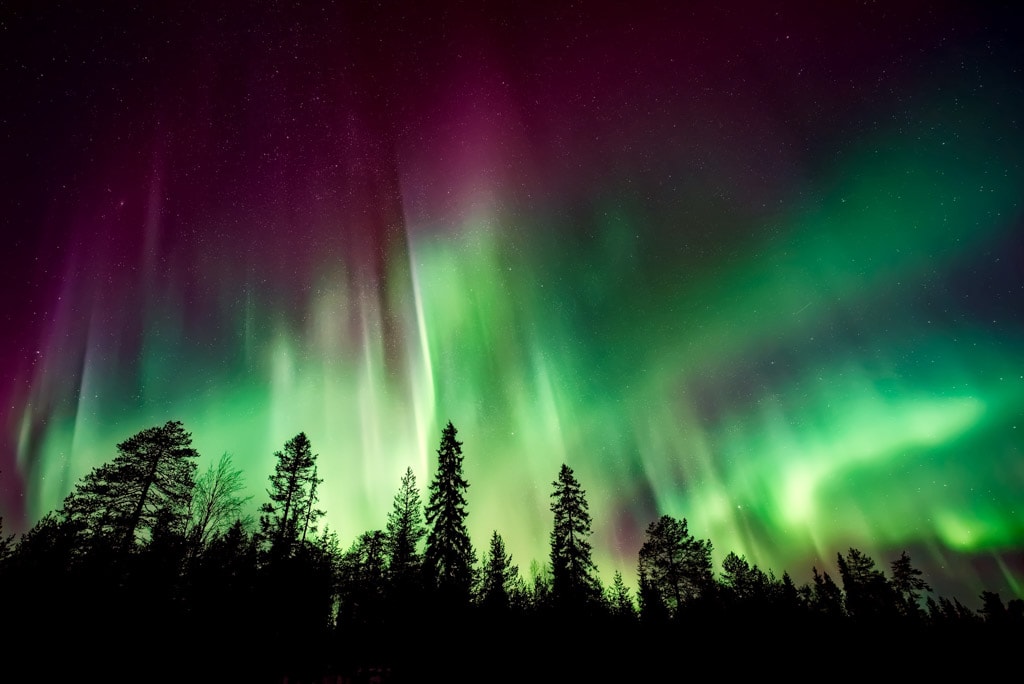
National Parks Northern Lights Viewing FAQs
What Is the Aurora Borealis?
The answer to this question can be either short and limited or long and very technical. I’ll go with the first option here.
Simply put, the Northern Lights occur when particles that stream from the sun collide with atoms in the atmosphere of the Earth. These magnetic and electrical solar forces excite those molecules, which causes them to glow.
The Aurora is basically a collision between electrons traveling at 1 million miles per second and atoms like oxygen or nitrogen high up in the sky—between 20 to 200 miles in altitude.
The color of the Northern Lights varies depending on two factors: which of those two atoms is hit and at what altitude that occurs.
- Red: oxygen; higher than 150 miles in altitude
- Green: oxygen; lower than 150 miles in altitude
- Purple: nitrogen; higher than 60 miles in altitude
- Blue: nitrogen; lower than 60 miles in altitude
They typically occur along so-called aurora ovals, a band around the world of hundreds of miles wide that roughly overlaps the Arctic Circle. That band is centered on the magnetic North Pole.
Note: The Aurora Borealis has a southern counterpart, too, which is known as the Aurora Australis or Southern Lights. Their band corresponds roughly with the Antarctic Circle.
If you’re interested in a more information about what the Northern Lights are and what causes them, the National Park Service has an elaborate explanation here.
Where Can You See the Northern Lights in the U.S.?
The further north you go, the higher your chances of seeing the Northern Lights in the U.S.
So naturally, Alaska, as the northernmost state, is the best place to go, with Denali National Park as its prime location. The Northern Lights in Alaska are most reliable and present through most of the year.
Elsewhere in the United States, you can regularly see the Aurora Borealis in the northern Lower 48 states. These include Washington, Idaho, Montana, North Dakota, Minnesota, Michigan, and Maine.

How Far South Can You See the Northern Lights?
Although the constant solar wind generates the “normal” Northern Lights along a hundreds-of-miles-wide band around the Arctic Circle at 66 degrees North, other more powerful solar events can result in the Aurora being visible at much lower latitudes.
These events are known as coronal mass ejections (CMEs), which are massive bursts of solar energy. When something like that occurs, the Northern Lights can be visible as far south as 35 degrees North.
It doesn’t happen often, but the Northern Lights have been observed in U.S. states like Ohio, Oregon, and Illinois.
What Are the Best Hours to See the Aurora Borealis?
Similar to stargazing, the best time to see the Northern Lights is during the darkest period of the night. This is typically from midnight to about 3 a.m.
The further north you go in fall and winter, however, the longer that period of ultimate darkness will be.
In places like Denali National Park, for example, night falls really early in fall and winter. Sunset on November 14, just to take a random day in fall, is as early as 4 p.m. there.
Where Can I Find a Northern Lights Forecast?
The website Space Weather provides a fantastic Aurora Borealis forecast for the entire Northern Hemisphere.
They have solar storm alerts, solar wind conditions, climate indexes, planetary Kp index predictions (everything above Kp 5 is great!) and much more.
Have You Ever Seen the Northern Lights in National Parks? Do You Have Any More Tips for Where to See the Northern Lights in the U.S.? Please Share Your Experience and/or Knowledge in the Comments Below!
Other National Park Attractions & Activities
- Best National Parks for Wildflowers
- National Parks With Volcanoes in America
- Most Dog-Friendly National Parks in the U.S.
- Best National Parks to Visit in Summer
- Best National Parks to Visit in Spring
- Top National Parks for Road Cycling
- Most Scenic Roads in U.S. National Parks
- Best National Parks for Mountain Biking
- Best National Parks for Bird Watching
- National Parks With Native American Sites


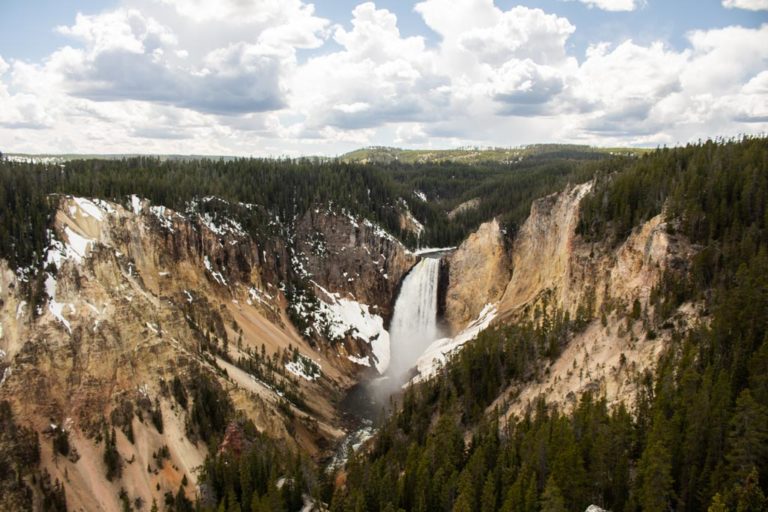
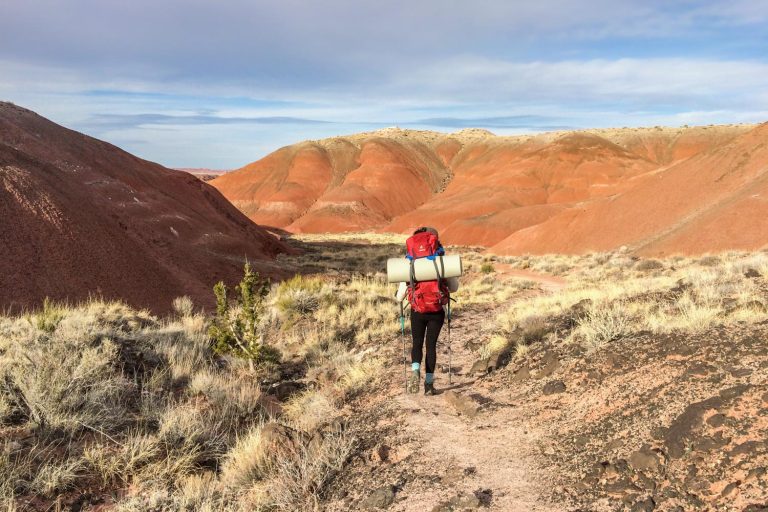


I saw the Northern Lights my first and only time, waking in the night from my sleeping bag, on Isle Royale Natonal Park, August 1970. I remember looking out at the sky and wondering, ”What is that shimmering?” Then realized I was viewing the Northern Lights! — After John Denver’s death I read a portion of his biography in the paper, where he related the night in August 1970 in the Colorado Rockies, when he and camping friends watched the Perseid Meteor Showers, ‘fire in the sky’, and he was inspired to write “Rocky Mountain High”. I realized then, that we had shared different views of the same celestial event!
Love that story, Cheri! Also one of my all-time favorite national park-themed songs!